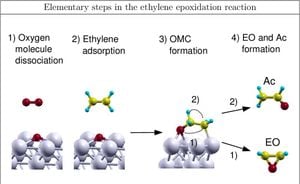Fossilized remains from prehistoric creatures provide invaluable insights, enabling scientists to trace the rich history of life on earth. A recent study focuses on the discovery of phosphatic concretions from the Cretaceous period, featuring the largely intact skull of a juvenile crocodylian. This research, conducted by paleontologists from several esteemed institutions, seeks to unravel whether the phosphatic concretion is the result of fecal material, known as coprolites, or if it originates from non-fecal sources.
Phosphatic concretions are geological formations commonly associated with fossilized feces, primarily due to the high phosphorus levels often found within them. Such characteristics lead researchers to frequently classify these structures as coprolites. Nevertheless, recent evidence suggests non-fecal origins may be more common than previously understood, leading to potential misinterpretations of paleobiological and paleoenvironmental contexts.
The study primarily centers around the UCM 123127 specimen, discovered within the Hell Creek Formation of Montana. Researchers utilized advanced imaging techniques, including neutron computed tomography (CT) and micro-X-ray fluorescence (µ-XRF), along with geochemical analysis methods to assess the composition and structure of the concretion.
Neutron CT was instrumental as it revealed remarkable details about the skeletal remains encapsulated within the concretion. Analysis pointed to the identification of Brachychampsa montana, an extinct crocodylian species. Such detailed imaging techniques allowed for insights on the age, growth patterns, and dietary habits of this species.
The study's findings indicate compelling evidence against the notion of the concretion being coprolitic. The low degree of fragmentation of the skeletal remains and their concentration within a specific layer of the concretion suggests rapid burial post-mortem and minimal disturbance, patterns more consistent with non-fecal origin. The apparent intactness of the skull, combined with geochemical analyses, supports the hypothesis of phosphatic burial resulting from biological and chemical interactions of decaying soft tissues, not ingestion and expulsion as fecal matter.
The specialists assert the importance of analyzing both physical and chemical properties of such concretions to accurately determine their origins. “This research indicates the significance of evaluating both physical structure and chemical composition to determine the genesis of fossils within geological contexts,” the authors of the article note.
Conclusively, the study of UCM 123127 reveals both the complexity and the necessity of precise criteria to distinguish between coprolites and non-fecal phosphatic concretions. Such distinctions are not merely academic; they have substantial repercussions for interpretations of the ecosystems where these now-extinct species thrived. Further investigation is recommended to strengthen models of paleoenvironments within the Hell Creek Formation and elucidate the dynamic interactions among ancient food webs.



